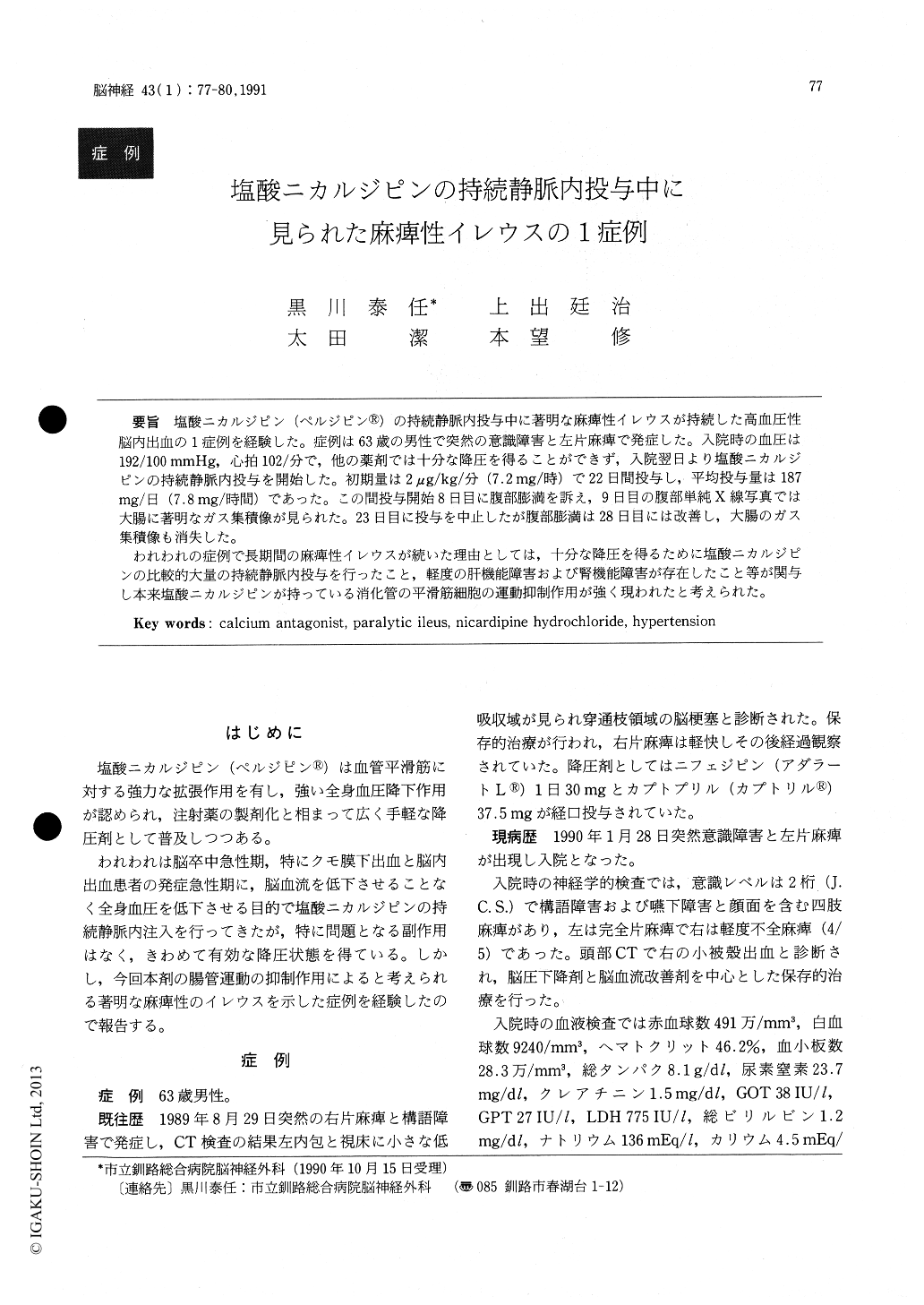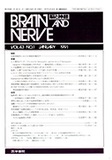Japanese
English
- 有料閲覧
- Abstract 文献概要
- 1ページ目 Look Inside
塩酸ニカルジピン(ペルジピン®)の持続静脈内投与中に著明な麻痺性イレウスが持続した高血圧性脳内出血の1症例を経験した。症例は63歳の男性で突然の意識障害と左片麻痺で発症した。入院時の血圧は192/100mmHg,心拍102/分で,他の薬剤では十分な降圧を得ることができず,入院翌日より塩酸ニカルジピンの持続静脈内投与を開始した。初期量は2μg/kg/分(7.2mg/時)で22日間投与し,平均投与量は187mg/日(7.8mg/時間)であった。この間投与開始8日目に腹部膨満を訴え,9日目の腹部単純X線写真では大腸に著明なガス集積像が見られた。23日目に投与を中止したが腹部膨満は28日目には改善し,大腸のガス集積像も消失した。
われわれの症例で長期間の麻痺性イレウスが続いた理由としては,十分な降圧を得るために塩酸ニカルジピンの比較的大量の持続静脈内投与を行ったこと,軽度の肝機能障害および腎機能障害が存在したこと等が関与し本来塩酸ニカルジピンが持っている消化管の平滑筋細胞の運動抑制作用が強く現われたと考えられた。
We report on a case of hypertensive intracerebral hematoma associated with a severe paralytic ileus during a continuous injection of nicardipine hydrochloride. The patient (63 year-old male) had been admitted with a left hemiparesis. On the second day of admission, the patient received a continuous intravenous injection of nicardipine hydrochloride following the failure to get a constant reduction of systemic blood pressure. The initial dose of the drug was 2 μg/kg/min. It was administered for 22 days and the average daily dosage was 187mg. On the eighth day following the beginning of the drug administration, he complained of abdominal distention. Abdominal X-ray photogram revealed a marked air collection in the colon. Despite various forms of treatments, the abdominal distention continued for 20 days until cessation of the drug administration.
The paralytic ileus in this case was most likely caused by the following ; 1) a relatively large amount of the drug was administered via the continuous intravenous route, 2) unexpected accumulation of the drug in the digestive tract may occur due to the dysfunction of the liver and the kidney, 3) clearance of the drug in humans may be lower than the expected value obtained from animal experiments.

Copyright © 1991, Igaku-Shoin Ltd. All rights reserved.


